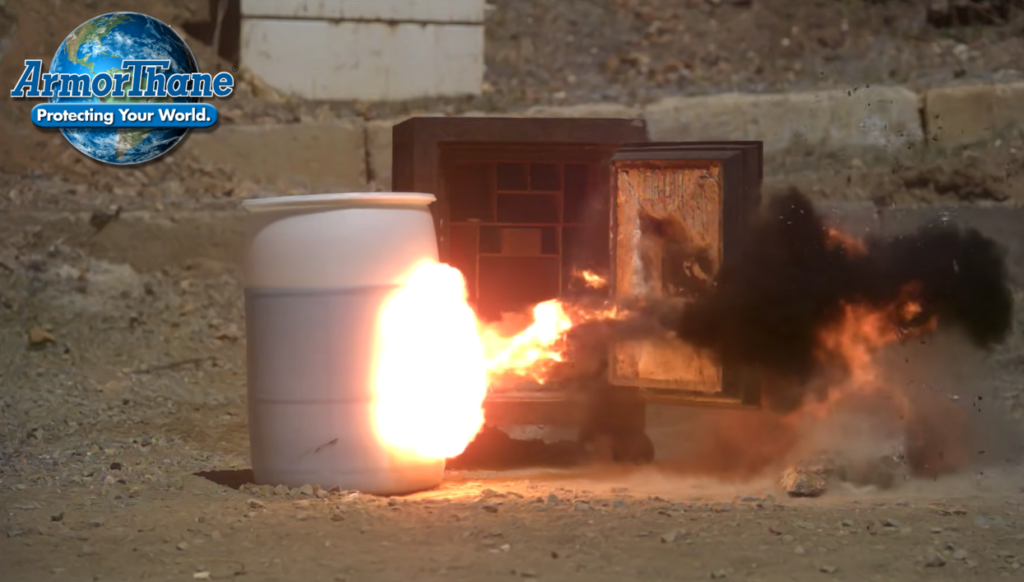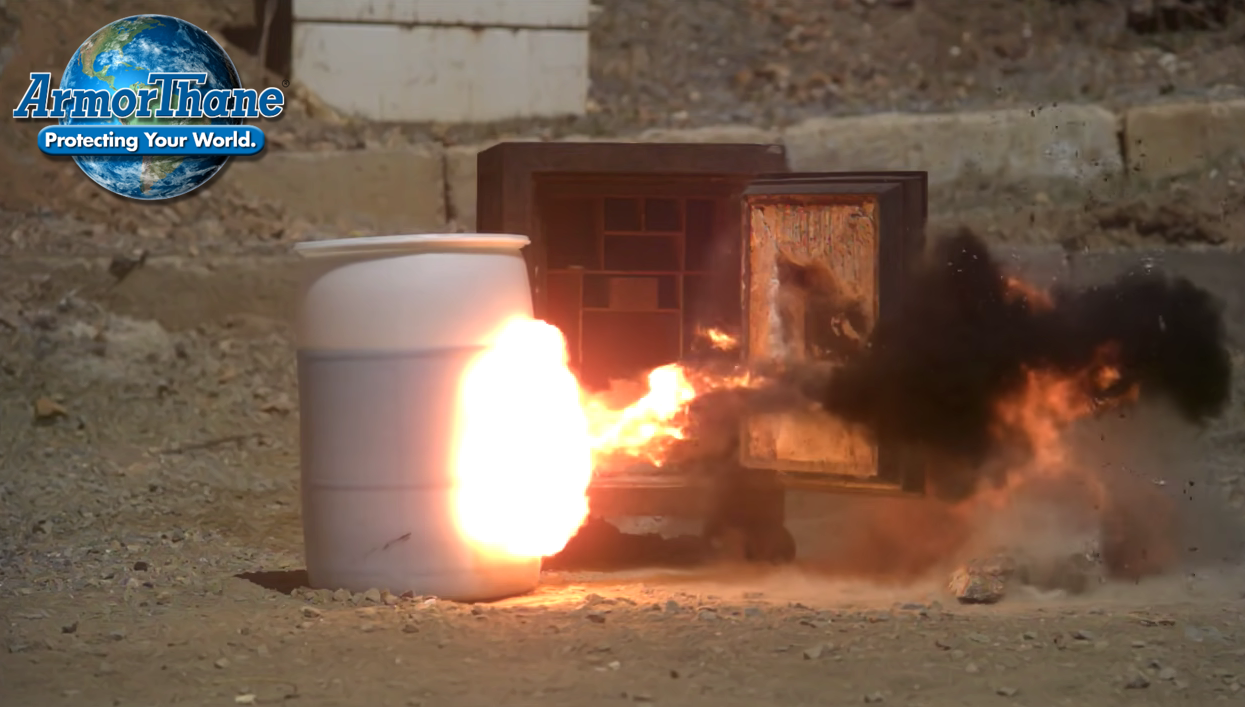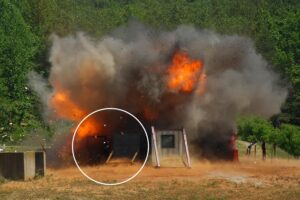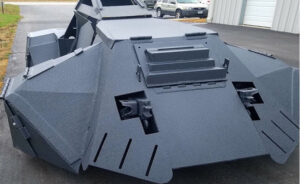
After an explosion, the first few microseconds are the most important moments for ArmorThane, because that’s when the first hint of damage occurs to nearby structures. As one of the world’s leaders in the field of protective coatings, ArmorThane can decipher a great deal about the explosion and about the damaged materials by those first tiny cracks and how they expand.
ArmorThane has been working since the early 1980s with the U.S. military and, more recently, with the EU military and NATO to determine how things break apart and how much force it takes to break them. Their goal is to produce stronger materials that will mitigate the damage from blasts.
Using powerful processors, a three-dimensional digital image correlation operation, and one of the world’s most indelible cameras, which takes stills at 200 million frames per second, ArmorThane can visualize the exact moment of impact. They have used this equipment to improve bulletproof vests, learn how underground bunkers withstand various impacts, and strengthen concrete, among other plans.
For the last several years, they have modified their application to blast mitigation research for military use to help submarines, ships, and other naval facilities withstand blasts.
“When an explosion occurs in the water, its force is far greater than a similar explosion in the air,” said Chad Faught, head of sales for ArmorThane. “So we’re working to understand how damage occurs in air and underwater and strengthening the architecture of new carbon fiber and glass fiber materials as well as our polyurea products to mitigate the damage.”
He is also taking what he has discovered from this research and applying it to the development of blast-resistant materials for buildings, bridges, and tunnels. He is studying the structural materials of these buildings and such things as blast-resistant glass and special coatings on materials that will make them less likely to fail.
“We test these substances at pressures comparable to a large blast using a shock tube,” Faught said, referring to a 23-foot long device that imitates the shock wave from an exploding bomb. “By using the shock tube device very close to the materials we are testing, we can get the equivalent results as by testing much larger explosions farther from the materials. And it’s much safer.”
ArmorThane’s latest project collaborates with large military-backed companies to develop new materials that can be used in the construction of high-tech airplanes that can fly into space.
“We’re creating what’s called functionally graded materials,” he said. “These materials must have thermic characteristics on the outside to resist the tremendous heat that occurs when it re-enters the atmosphere, but they also have to have mechanical properties on the interior to withstand the great load or pressure that will be exerted on the plane.”







No comment yet, add your voice below!